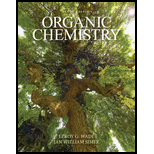
Concept explainers
(a)
To determine: A list of the elements in the first two rows of the periodic table with their numbers of valence electrons.
Interpretation: A list of the elements in the first two rows of the periodic table with their numbers of valence electrons is to be shown.
Concept introduction: Periodic table is a systematic arrangement of all the elements present in nature. The periodic table which is used in the present time is called modern periodic table. It is based on periods and groups. The horizontal rows are called periods and vertical columns are called groups.
(b)
To determine: The use of the list to construct first two rows of the periodic table.
Interpretation: The use of the list to construct first two rows of the periodic table is to be stated.
Concept introduction: Periodic table is a systematic arrangement of all the elements present in nature. The periodic table which is used in the present time is called modern periodic table. It is based on periods and groups. The horizontal rows are called periods and vertical columns are called groups.
(c)
To add: The elements sulfur, phosphorus, chlorine, bromine, and iodine in the periodic table representation.
Interpretation: The elements sulfur, phosphorus, chlorine, bromine, and iodine are to be represented in the periodic table.
Concept introduction: Periodic table is a systematic arrangement of all the elements present in nature. The periodic table which is used in the present time is called modern periodic table. It is based on periods and groups. The horizontal rows are called periods and vertical columns are called groups.
Want to see the full answer?
Check out a sample textbook solution
Chapter 1 Solutions
Organic Chemistry (9th Edition)
- The electrons flow from the electron-rich atoms of the nucleophile to the electrons poor atoms of the alkyl halide. Identify the electron rich in the nucleophile. Enter the element symbol only, do not include any changes.arrow_forwardHello, I am doing a court case analysis in my Analytical Chemistry course. The case is about a dog napping and my role is prosecution of the defendant. I am tasked in the Area of Expertise in Neutron Activation and Isotopic Analysis. Attached is the following case study reading of my area of expertise! The landscaping stone was not particularly distinctive in its decoration but matched both the color and pattern of the Fluential’s landscaping stone as well as the stone in the back of the recovered vehicle. Further analysis of the stone was done using a technique called instrumental neutron activation analysis. (Proceed to Neutron Activation data) Photo Notes: Landscaping stone recovered in vehicle. Stone at Fluential’s home is similar inappearance. Finally, the white paint on the brick was analyzed using stable isotope analysis. The brick recovered at the scene had smeared white paint on it. A couple of pieces of brick in the back of the car had white paint on them. They…arrow_forwardCite the stability criteria of an enamine..arrow_forward
- What would you expect to be the major product obtained from the following reaction? Please explain what is happening here. Provide a detailed explanation and a drawing showing how the reaction occurs. The correct answer to this question is V.arrow_forwardPlease answer the question for the reactions, thank youarrow_forwardWhat is the product of the following reaction? Please include a detailed explanation of what is happening in this question. Include a drawing showing how the reagent is reacting with the catalyst to produce the correct product. The correct answer is IV.arrow_forward
- Please complete the reactions, thank youarrow_forwardConsider the synthesis. What is compound Y? Please explain what is happening in this question. Provide a detailed explanation and a drawing to show how the compound Y creates the product. The correct answer is D.arrow_forwardWhat would be the major product of the following reaction? Please include a detailed explanation of what is happening in this question. Include steps and a drawing to show this reaction proceeds and how the final product is formed. The correct answer is B. I put answer D and I don't really understand what is going on in the question.arrow_forward
- Chemistry: Matter and ChangeChemistryISBN:9780078746376Author:Dinah Zike, Laurel Dingrando, Nicholas Hainen, Cheryl WistromPublisher:Glencoe/McGraw-Hill School Pub Co
